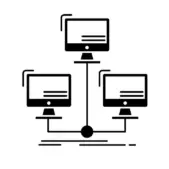Great UX design creates a smooth, intuitive experience for users. Yet, decision-makers may not recognize its value. Business leaders focused on profits in a competitive market need convincing that UX design investment will provide a worthwhile return. Whether you’re the chief technology officer or the head of marketing or sales, you’ll need to prove the value of investing in UX design to your employer as a prerequisite to building or redesigning a website or application.
In this article, we look at steps you can take to ensure the decision makers in your organization understand the value of UX to your company’s bottom line. By presenting a data-driven, results-oriented approach, you can effectively communicate the tangible benefits of UX design and secure the necessary resources to elevate the user experience.

1. Get the Facts
The value of good UX design extends beyond end users. Your proposal must also consider the design, development, and IT teams. Ensure your boss understands their perspectives.
Designers and developers may resent constructing new site iterations to address navigation or purchasing process issues caused by poor UX design. Similarly, IT staff worry poor design will distract them from critical tasks to handle site or app glitches.
In contrast, a clearly crafted, easily navigable page or application will result in fewer user errors. This reduces staff time spent addressing issues and can potentially increase conversions. Provide examples from non-UX projects where poor design decreased worker productivity.
2. Start With a Low-Risk Test Case
If leadership struggles to see the big picture, start with a smaller, low-risk project. This can help your case in demonstrating the value of effective UX design. For instance, add a single UX feature to your website. Alternatively, invite one small company division to study the impact of a back-end application. This allows you to prove the benefits of UX on a smaller scale, rather than rebuilding an entire site or app from scratch.
3. Perform Metric Analysis
If you already have a site or application in place, you have the benefit of leveraging existing metrics to make your case. For consumer-facing sites or applications, track bounce rates to see how quickly users leave your page. This indicates at what point your users lose interest. If they’re making their way through the sales funnel but abandon purchases in their cart, you may have an overly complex purchasing process.
With back-end projects for internal use among employees, the value of metric analysis lies in tracking performance. Use your existing protocols to determine which tasks take employees the longest to complete. You also want to determine where they are making the most operational errors. The value of investing in UX design lies in the objective of streamlining communications, improving the efficiency of workers, and minimizing mistakes. If you can do this, you will also boost morale, leading to a more enthusiastic and engaged workforce.
4. Put Your Employer in the Tester’s Seat
User testing is a critical component of UX design. Actual users provide researchers with valuable insights into how they experience and interact with the design. To make the case for investing in UX, have your leadership test the website or app. Ask them to complete a purchase or administrative task. This will help them see through the eyes of employees and customers. They may then acknowledge the need for improvements.
Adopting this user-centric approach may be more effective than abstract arguments alone in securing their buy-in for UX investment.
Securing Buy-In for Impactful UX Design
Although singlehandedly proving the value of investing in solid UX design may seem like a large hurdle, the benefits are clear to anyone willing to listen. Any company that allocates resources to improving UX will always outperform an equivalent company that does not. The value of UX design cannot be overstated, and failure to recognize it can be even more costly in the long run.
Want to discuss the best way forward? UpTop’s team of UX experts, designers, strategists, and developers are ready to help you optimize your digital products for user satisfaction and profitability. Let’s connect.


